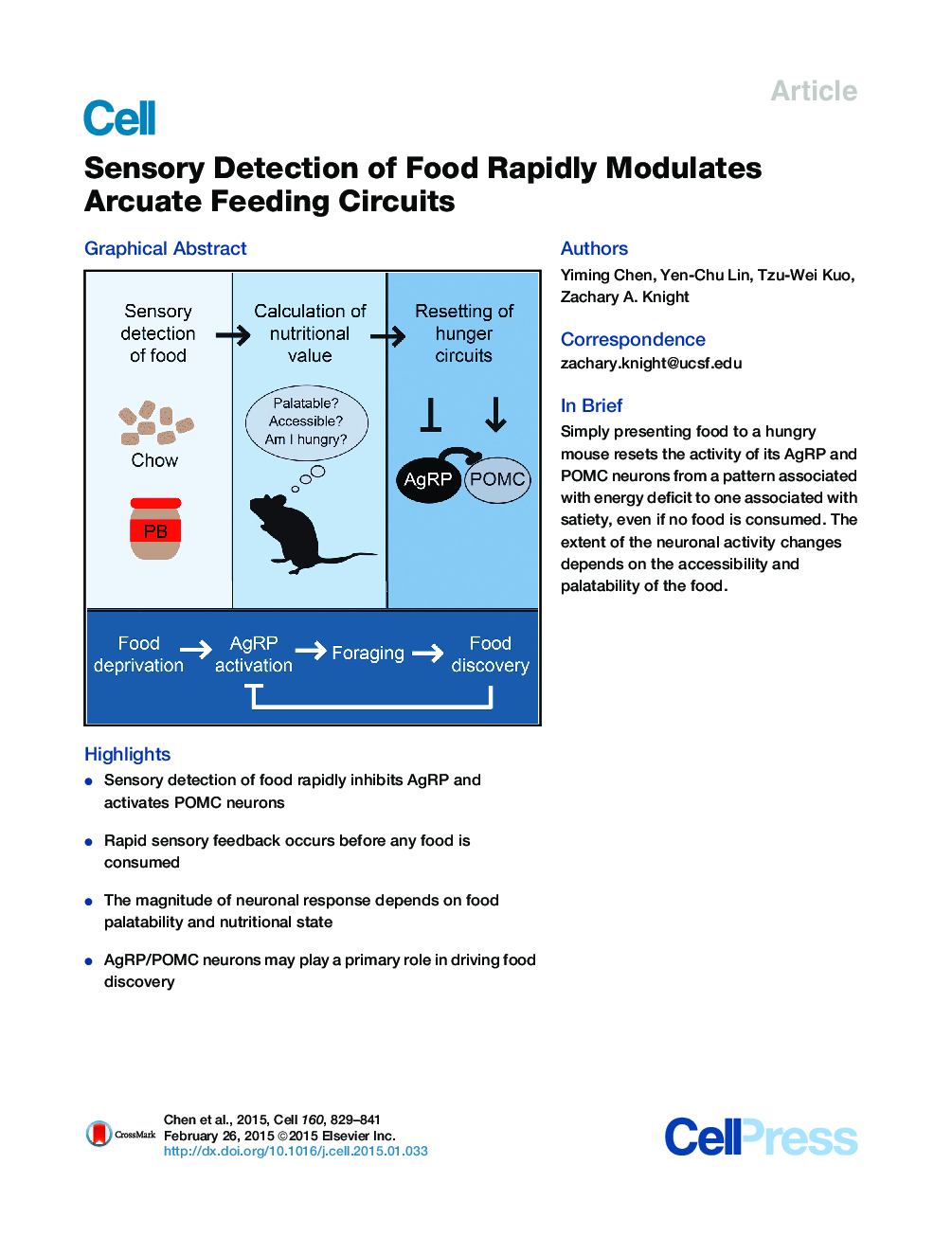| Article ID | Journal | Published Year | Pages | File Type |
|---|---|---|---|---|
| 2035139 | Cell | 2015 | 13 Pages |
•Sensory detection of food rapidly inhibits AgRP and activates POMC neurons•Rapid sensory feedback occurs before any food is consumed•The magnitude of neuronal response depends on food palatability and nutritional state•AgRP/POMC neurons may play a primary role in driving food discovery
SummaryHunger is controlled by specialized neural circuits that translate homeostatic needs into motivated behaviors. These circuits are under chronic control by circulating signals of nutritional state, but their rapid dynamics on the timescale of behavior remain unknown. Here, we report optical recording of the natural activity of two key cell types that control food intake, AgRP and POMC neurons, in awake behaving mice. We find unexpectedly that the sensory detection of food is sufficient to rapidly reverse the activation state of these neurons induced by energy deficit. This rapid regulation is cell-type specific, modulated by food palatability and nutritional state, and occurs before any food is consumed. These data reveal that AgRP and POMC neurons receive real-time information about the availability of food in the external world, suggesting a primary role for these neurons in controlling appetitive behaviors such as foraging that promote the discovery of food.
Graphical AbstractFigure optionsDownload full-size imageDownload high-quality image (180 K)Download as PowerPoint slide
